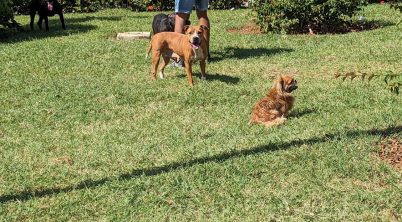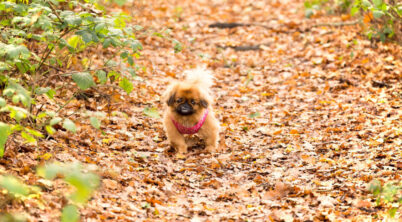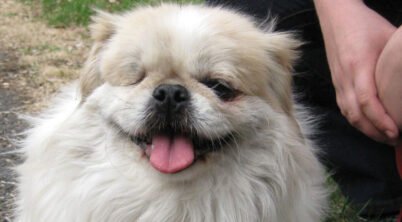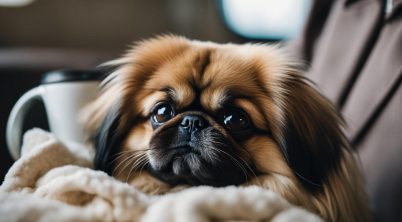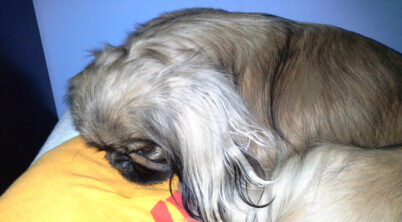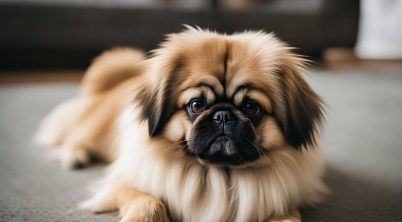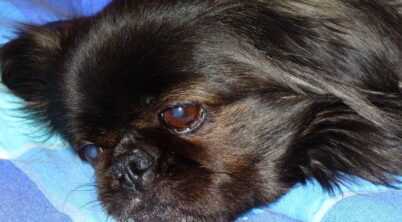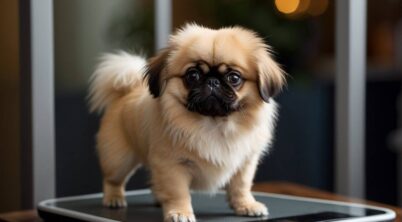The Pekingese dog breed is a testament to the unique bond between humans and their canine companions. Known for their distinctive lion-like mane, regal demeanor, and storied past, Pekingese dogs were historically bred and revered by Chinese royalty. This breed has maintained a prestigious reputation over time and has found its way into the homes and hearts of various notable individuals outside the ancient Chinese imperial family.
Whether making an appearance in the arms of aristocrats or gracing the silver screen, Pekingese have captivated a worldwide audience. The breed’s charm and loyalty have made it not just a pet but a symbolic representation of opulence and grace to its owners. From Lady Louise Mountbatten, who was known to have been Queen of Sweden, to the ranks of show business and beyond, the Pekingese has established a legacy of famous owners who cherish their unique qualities.
As resilient as they are elegant, Pekingese dogs carry a rich history and are recognized in modern pop culture as much as in ancient folklore. Once considered good luck charms and kept as loyal protectors by nobles, they continue to be favored for their distinct appearance and strong protective instinct. They embody a timeless appeal that transcends cultural boundaries, making the Pekingese a beloved breed among dog lovers across the globe.
Table of Contents
History and Origin
The Pekingese breed has its roots deeply embedded in ancient China, where they were cherished by emperors and the nobility. Originating in the courts of Beijing, then known as Peking, they served as palace dogs, symbolizing wealth and prestige. The breed’s history is interwoven with the luxuries of the Forbidden City and the Old Summer Palace, also known as Yuanmingyuan.
During the Second Opium War in the mid-19th century, British and French troops invaded the Old Summer Palace. It is here that Captain John Hart Dunne acquired five Pekingese dogs following the looting of the palace. Among these dogs was one named Looty, which was presented to Queen Victoria, thus introducing the breed to the Western world.
Beyond Queen Victoria, the Pekingese garnered favor with other notable individuals. Theodore Roosevelt‘s daughter, Alice, owned a Pekingese named Manchu, gifted by the Chinese imperial family. The timeless appeal of the Pekingese even attracted financial magnates like John Pierpont Morgan, who also owned one.
These reserved, yet dignified dogs survived the downfall of the Chinese empire and a catastrophic event in their native land, the smallpox epidemic, proving the breed’s resilience. Today, they continue to be a testament to their storied past, standing as a living piece of history and a reminder of their regal origins in the heart of China.
Physical Characteristics
Pekingese are a distinctive breed known for their lion-like appearance and noble demeanor. With a compact, stocky body, they sport a luxurious double coat that can appear in various colors, including red, white, tan, gold, black, cream, sable, and even blue. Often, their fur is densest around their neck and shoulders, forming an impressive mane reminiscent of their nickname, the “lion dog”.
These dogs are characterized by their pear-shaped body and distinctive rolling gait, which adds to their dignified presence. A definitive feature of the Pekingese is their flat-faced, or brachycephalic, appearance. This structure of their skulls gives them their unique short muzzle and broad face, which has been both cherished and leads to potential health concerns, such as respiratory and eye issues.
| Feature | Description |
|---|---|
| Ears | They have heart-shaped, drooping ears that lie against their head, typically covered in long fur. |
| Coat | Pekingese possess a thick double coat that requires regular grooming to handle their shedding. |
| Eyes | Their large, round eyes are expressive but can be prone to issues due to their brachycephalic nature. |
Careful grooming is essential for Pekingese, not only to maintain their striking appearance but also to prevent skin and eye problems that can arise from their unique characteristics. A specific attention to their coat and cleaning around their face can help mitigate some health risks associated with their breed.
Famous Pekingese Owners
The Pekingese dog breed has been a favorite amongst many, from the aristocracy to celebrities in show business. Known for their lion-like appearance and regal demeanor, Pekingese dogs have found their way into the hearts and homes of various notable individuals throughout history.
One of the most historical Pekingese named Ah Cum is considered a foundational sire for the breed. His journey began when he was smuggled into Britain in the year 1896, marking the breed’s profound connection to the Western world.
In the realm of celebrity, Olive Thomas, an American silent-film actress and model of the early 20th century, was known to own a Pekingese. This highlights the breed’s longstanding appeal to those in the limelight.
Even the British Monarchy has shown affection for the Pekingese breed. One infamous moment in canine lore includes the acquisition of five Pekingese dogs from Yuanmingyuan, one of which—a fawn and white female adorned with silver bells—was presented to Queen Victoria.
Below is a list of some notable Pekingese owners:
- Aristocracy: Connection to imperial Chinese history, with members of European royalty like Queen Victoria owning the breed.
- Celebrities: Loved by stars such as Olive Thomas, illustrating the breed’s enduring charm in show business.
- Historical Figures: Beyond celebrities and royalty, the breed has been the companion of notable individuals across various spheres over time.
Without a doubt, Pekingese dogs have been esteemed companions, loved for their character and their cultural significance, transcending boundaries whether in front of a camera or within the walls of palatial estates.
Famous Pekingeses
The Pekingese dog breed has enjoyed a storied history with high-profile figures ranging from royal personages to iconic celebrities. Their distinct presence is marked by a legacy that intertwines with human high society.
Historical Pekingeses
One of the earliest and most notable Pekingeses was Looty, a dog presented to Queen Victoria after the Second Opium War; a breed once exclusive to Chinese nobility. Additionally, Tricki Woo was a glamorous Pekingese character brought to life in the writings of James Herriot, symbolizing the breed’s royal connections.
Celebrity Pekingeses
Wasabi, a modern Pekingese legacy, carried forth the breed’s prestige by winning Best in Show at the Westminster Dog Show and being the descendant of the 2012 champion, Malachy.
Prominent figures such as Jayne Mansfield (pictured above) and Elizabeth Taylor are known for their attachment to this breed, solidifying the Pekingese’s status among the glitterati. Joan Rivers, with her sharp wit, was accompanied by her equally spirited Pekingese off-screen, revealing the breed’s enduring appeal to people with a taste for the refined. Romantic novelist Barbara Cartland and acclaimed actor Richard Burton also shared life moments with their Pekingese companions, showcasing the breed’s broad appeal across varied spheres of celebrity.
Cultural Significance
The Pekingese breed boasts a distinguished and symbolically rich history, closely intertwined with Chinese royalty and culture.
Symbolism and Representation
The Pekingese dog, with origins tracing back to ancient China, has long been shrouded in symbolic significance. These toy dogs were often referred to as “lion dogs” due to their notable resemblance to Chinese guardian lions. This association extended to a spiritual representation, as they were thought to embody the spirit of the lion, an animal traditionally symbolizing courage and strength.
In the imperial courts, Pekingese were more than mere pets; they were palace dogs treasured by emperors and royalty. Some believed they were manifestations of mythical creatures and thus held them in high esteem. Small enough to fit in the sleeves of royal garments, these dogs were often referred to as “sleeve dogs,” serving both as companions and status symbols for their owners.
Modern Popularity
Modern Pekingese continue to be a symbol of opulence and refinement. Despite their ancient lineage, their popularity persists. They are recognized by major canine institutions such as the Kennel Club and the American Kennel Club, maintaining their status as a distinguished breed.
Historical events such as the Opium Wars brought these dogs to the attention of British soldiers, who, after the invasion of the Beijing Summer Palace, brought them back to England. One such dog, presented to Queen Victoria, was named “Looty,” marking the breed’s transition from palace guardians in China to cherished pets in European high society. The breed’s international reputations as both royal companions and guard dogs were thus solidified, spanning beyond its native Chinese heritage.
The Pekingese’s influence can even be felt in American history where breed variations, like the Teddy Roosevelt Terrier — named in honor of President Theodore Roosevelt — have gained recognition. Though not direct descendants, breeds like the Doberman Pinscher, which served as a loyal companion to President Roosevelt, are seen in a similar light: esteemed, protective dogs with a powerful presence in the homes of leaders.
Acquiring a Pekingese
When one decides to welcome a Pekingese into their home, they are choosing a companion with a royal lineage. Prospective owners should be prepared to address the breed-specific needs of these affectionate dogs.
Choosing a Pup
When selecting a Pekingese puppy, prospective owners should consult reputable breeders who adhere to the standards set by recognized kennel clubs. It is essential to check for:
- Health Certifications: Breeders should provide proof of health screenings and vaccinations.
- Temperament: Pekingese puppies should show a friendly and affectionate nature, indicative of their breed.
One should also consider the compatibility of a Pekingese with other pets, such as cats or fish, to ensure a harmonious household.
Living with a Pekingese
A Pekingese requires:
- Grooming: Their thick mane and coat demand regular grooming.
- Companionship: They thrive on being close to their owners and participating in family activities.
Adopting a Pekingese means committing to its well-being by understanding the breeds’ requirements and providing a loving environment. It’s not just about adding a pet; it’s about adding a new member to the family.
* Banner photo by IISG, cropped | Some rights reserved

